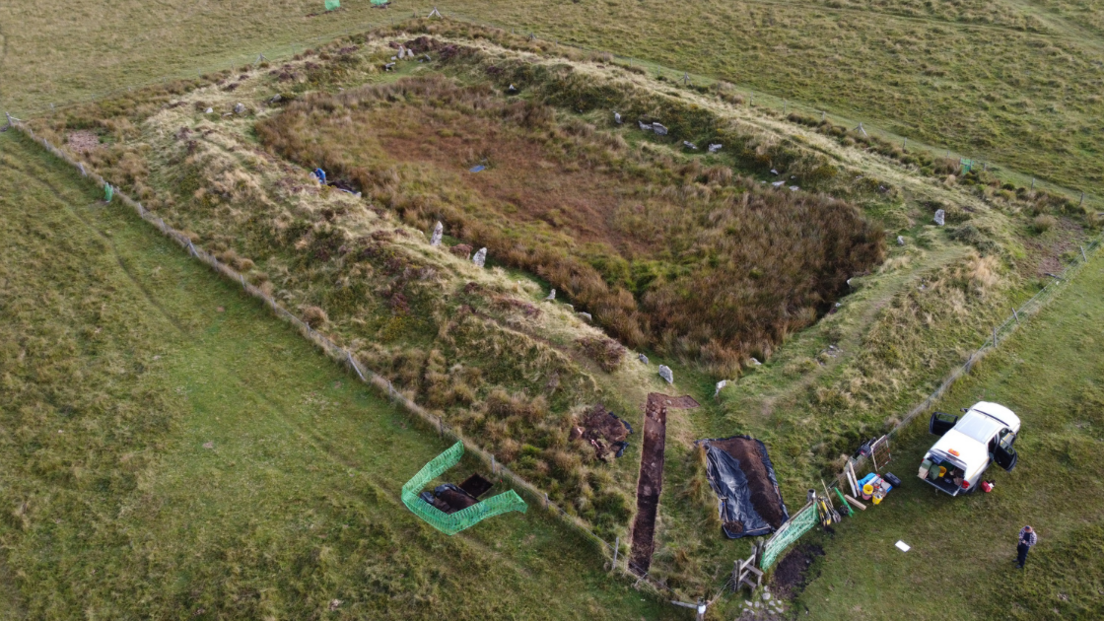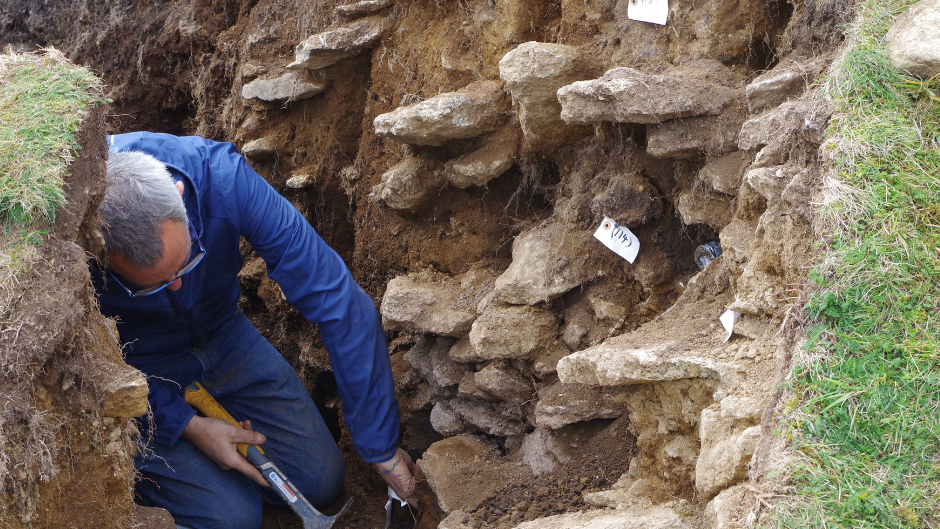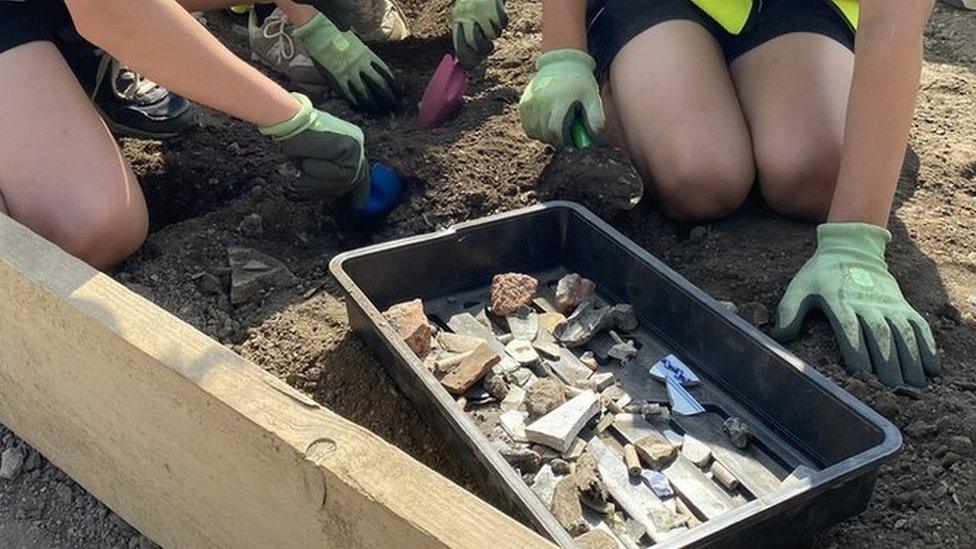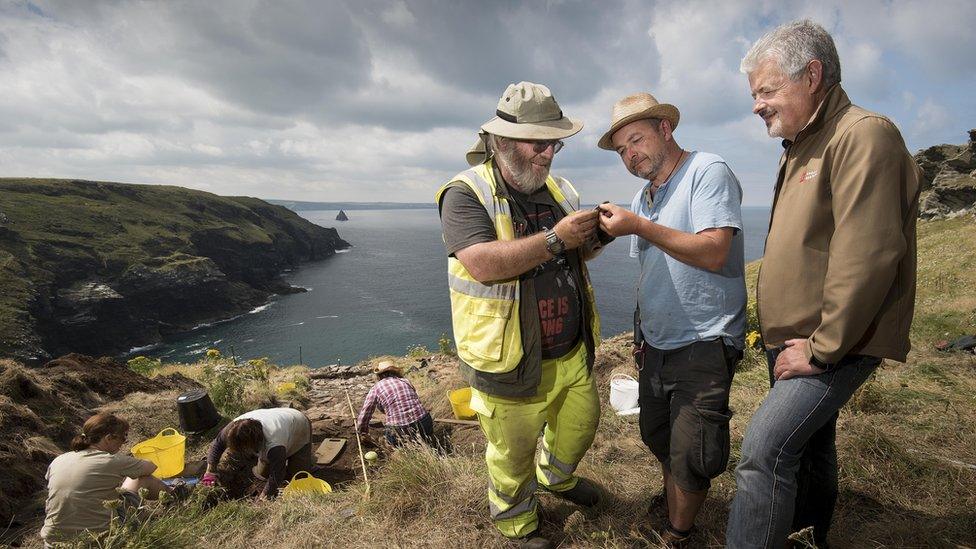King Arthur site five times older than thought

Speculation the site may be prehistoric because of its standing stones have now been confirmed
- Published
A historic site in Cornwall linked to King Arthur has been found to be up to five times older than previously thought after a new survey was carried out.
Historic England said the findings of the dig at King Arthur's Hall, on Bodmin Moor, were the first to confirm the site dated back to prehistoric times.
The monument was previously listed as dating back to the medieval period but it is now believed to date back 4,000 years earlier to the Neolithic period by a group of specialists from UK universities.
Dr Tim Kinnaird, from the University of St Andrews, said the findings were a "major revelation".
He said archaeologists would "now have to re-appraise our understanding of the prehistoric landscape of Bodmin Moor".
"It's extremely exciting that we've finally been able to date construction of this enigmatic monument, previously grounded in myths and legends," he said.

Archaeologists from UK universities were joined by local volunteers for the dig
Historic England said there had been speculation the site dated back to pre-historic times because of its standing stones, but the new survey was the first to confirm this.
Researchers working on behalf of the Cornwall Archaeological Unit (CAU) were joined by volunteers for the dig, which began in 2022.
Samples taken from the monument, including pollen, insects and parasite eggs, were radiocarbon dated, Historic England said.
The results were combined with other dating techniques, such as Optically Stimulated Luminescence, to give a date of between 5,500 and 5,000 years ago.
'Unique monument'
Geological examination of the standing stones suggested they came "from within 250m (820 feet) of the site and were possibly dug out from the interior rather than from a distant tor", Historic England said.
James Gossip, from the CAU, said the site had been used and upgraded at various times in its history, up to the medieval period.
"Knowing when King Arthur's Hall was built will help us understand this unique monument form better, how it might have originally been used and how it could have been used over time," he said.
He said the findings would help answer questions such as whether the stones were "placed there at the time of building or later in prehistory" and if the site was used "as an animal pound or reservoir".
Erosion risk
Dr Rob Batchelor, director of Quest, an archaeological unit from the University of Reading, said: "The wild, remote landscape of Bodmin Moor has inspired centuries of legends, but this extraordinary new finding shows how science can help deliver stories that are just as intriguing.
"Further analysis of these sediment cores may yet reveal more about what our Cornish ancestors were doing there and their impact on the local environment."
Historic England said visitors to the site should be careful not to disturb the monument as it was at risk of erosion.
The site is on the body's At Risk Register because of overgrown vegetation and the risk of erosion from visitors and livestock.
Follow BBC Cornwall on X, external, Facebook, external and Instagram, external. Send your story ideas to spotlight@bbc.co.uk, external.
Related topics
- Published27 January 2024

- Published20 June 2023

- Published3 August 2016

- Published15 June 2018
